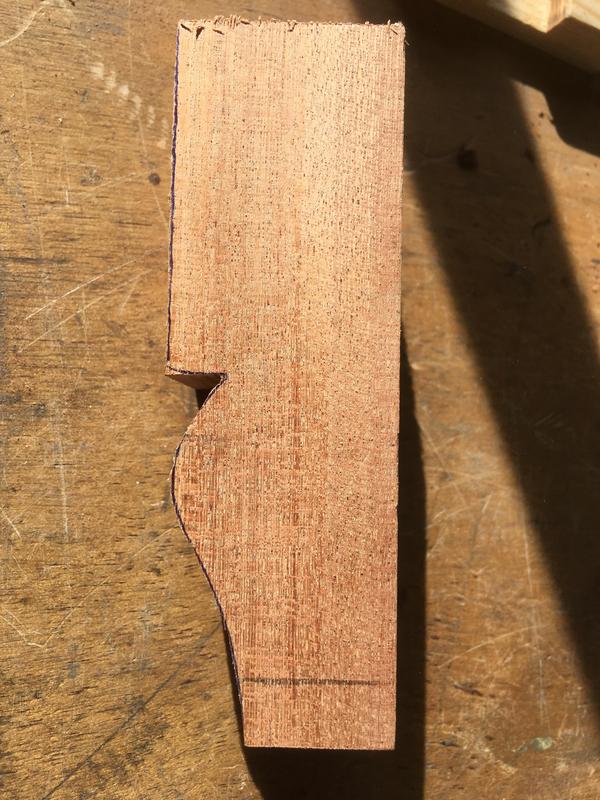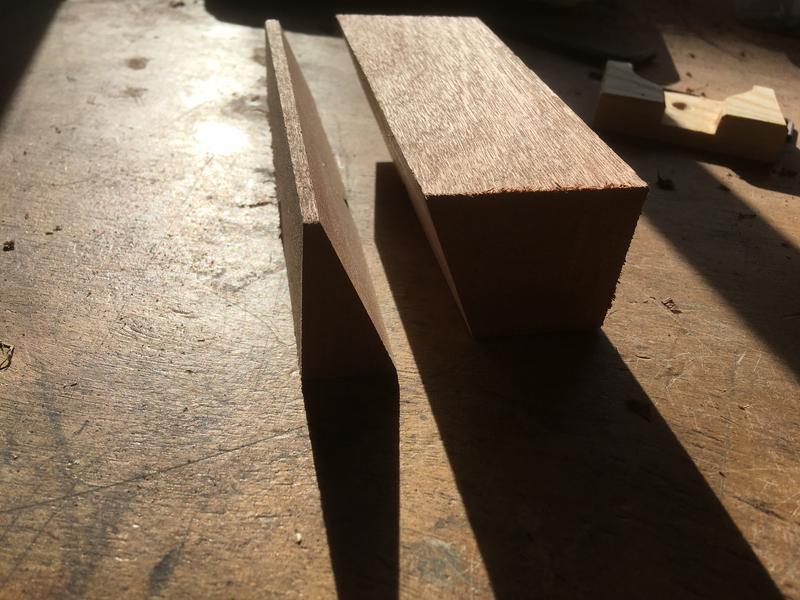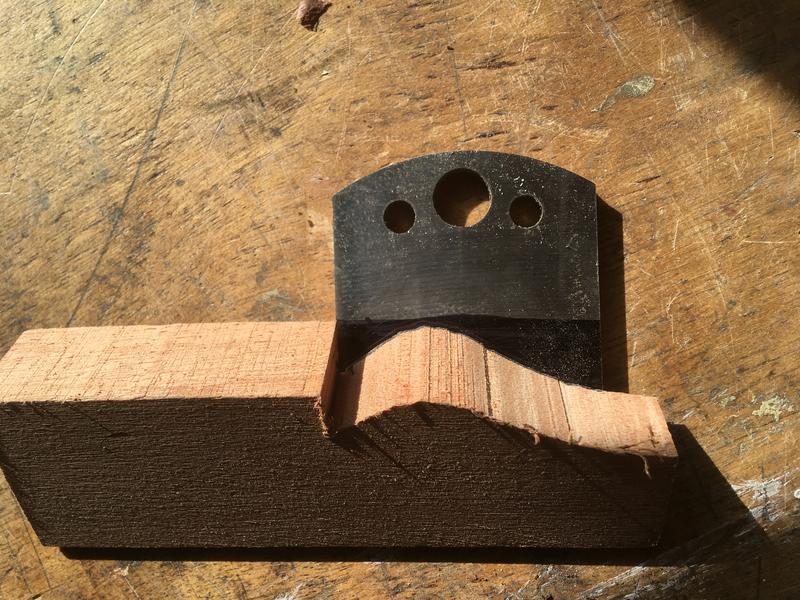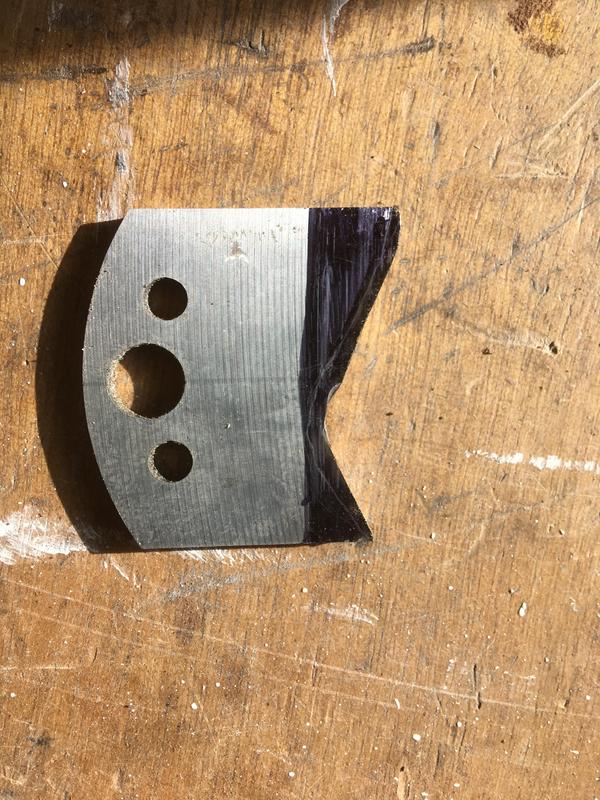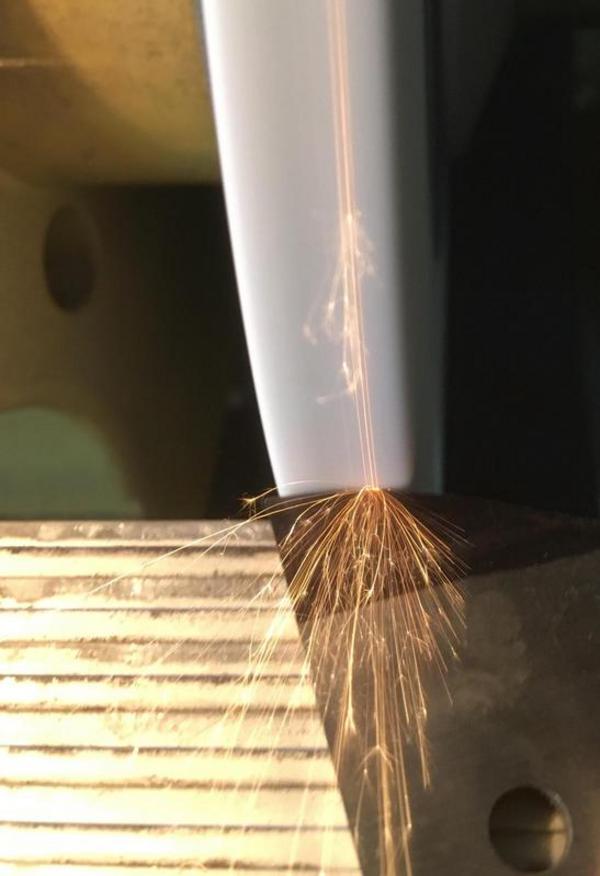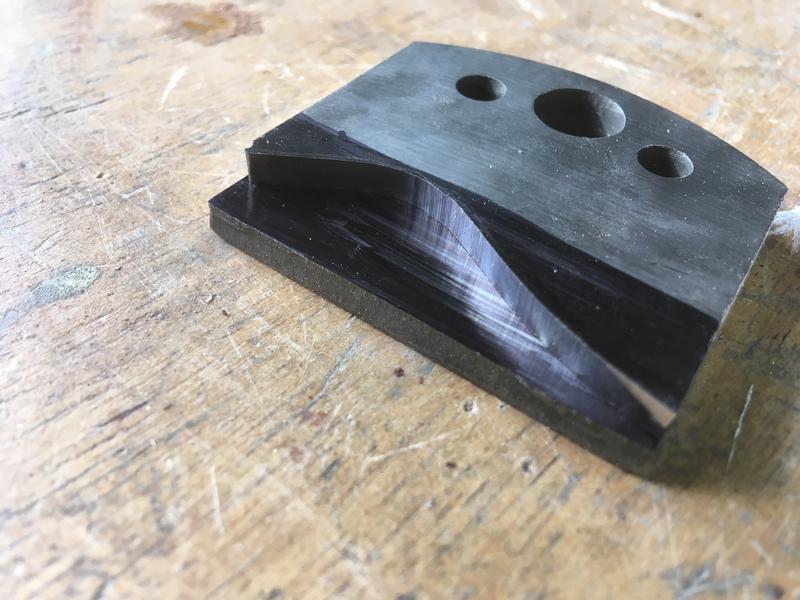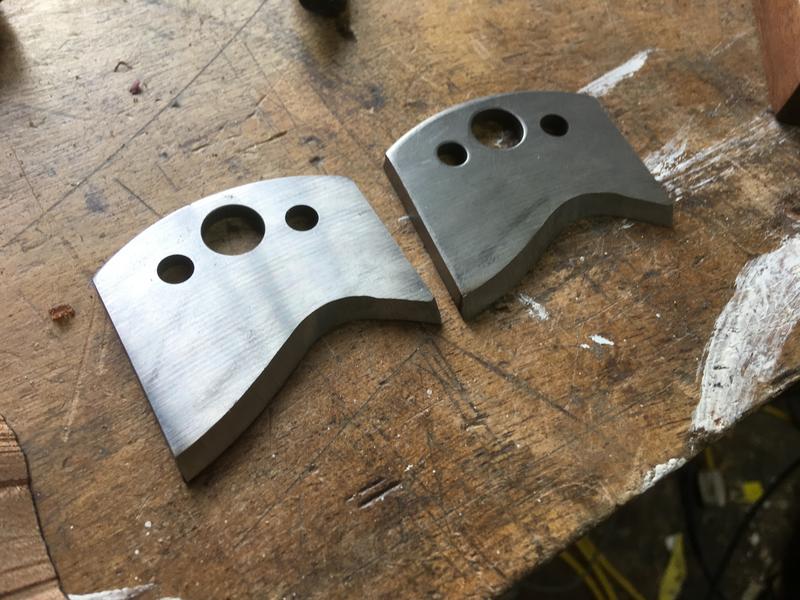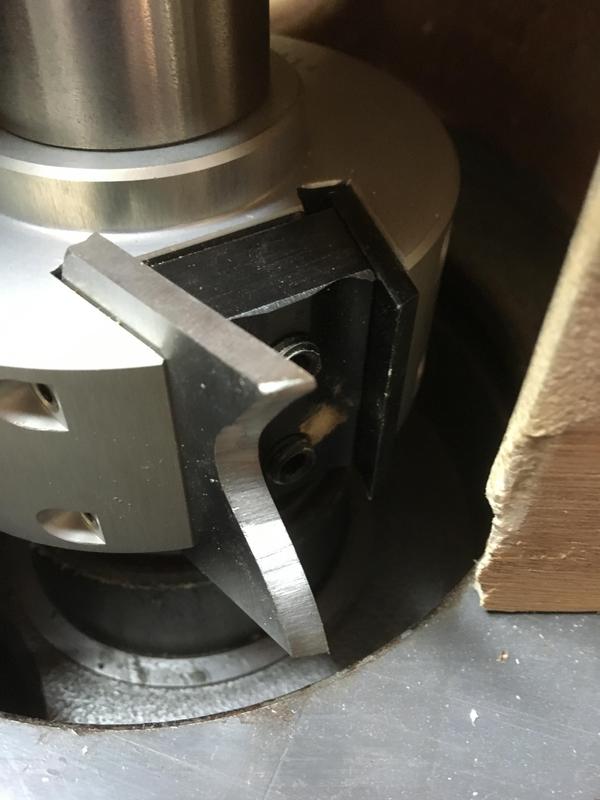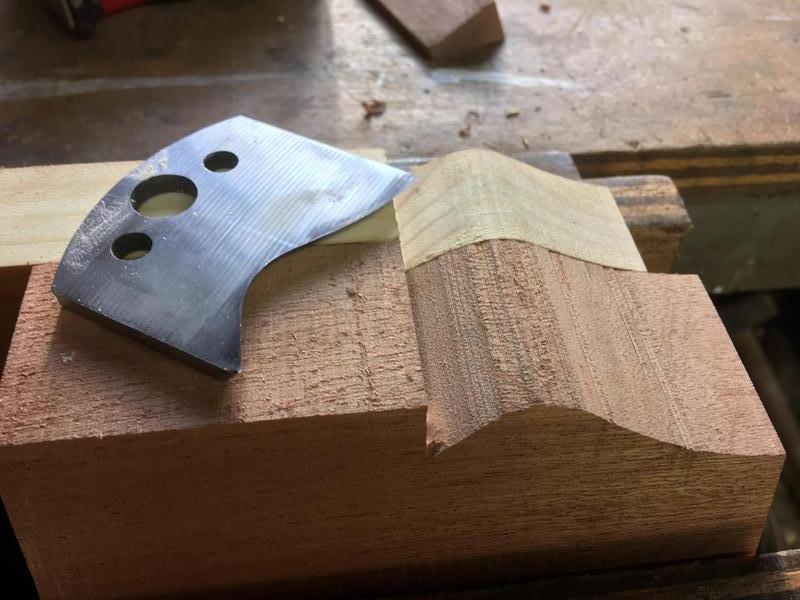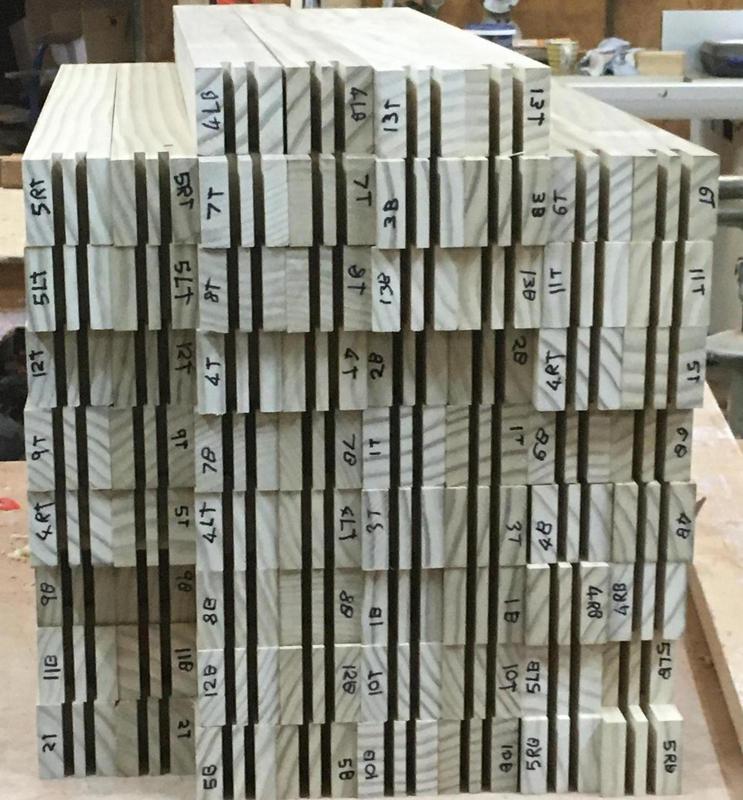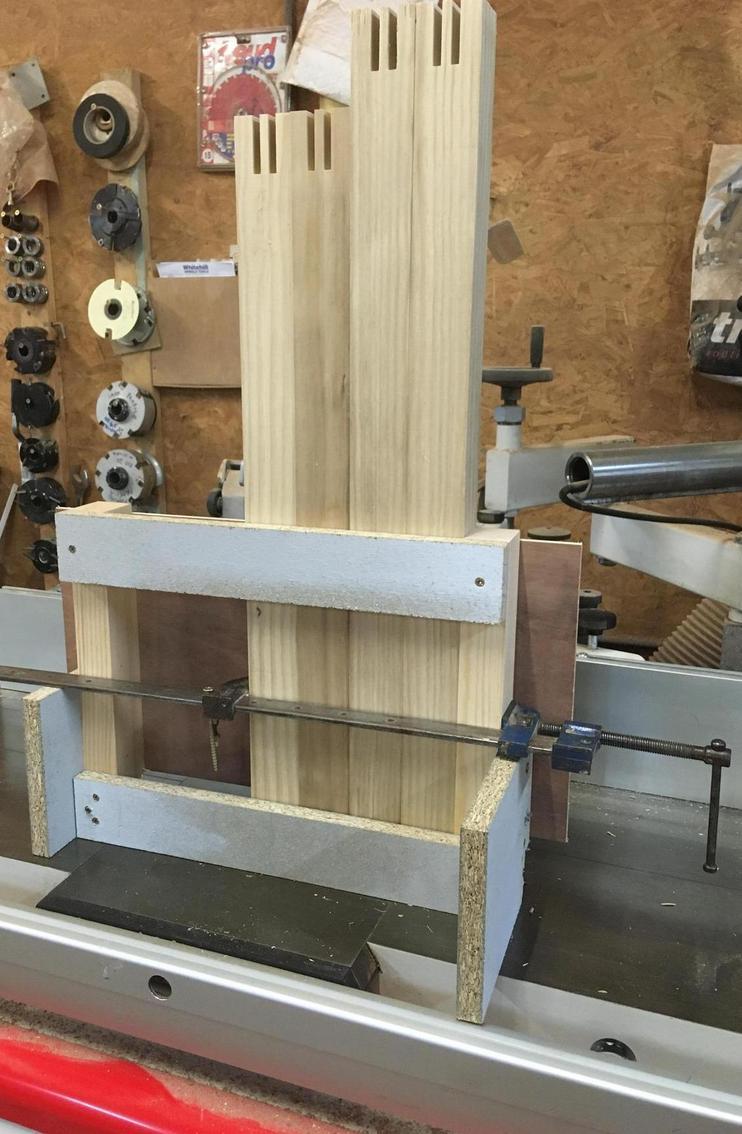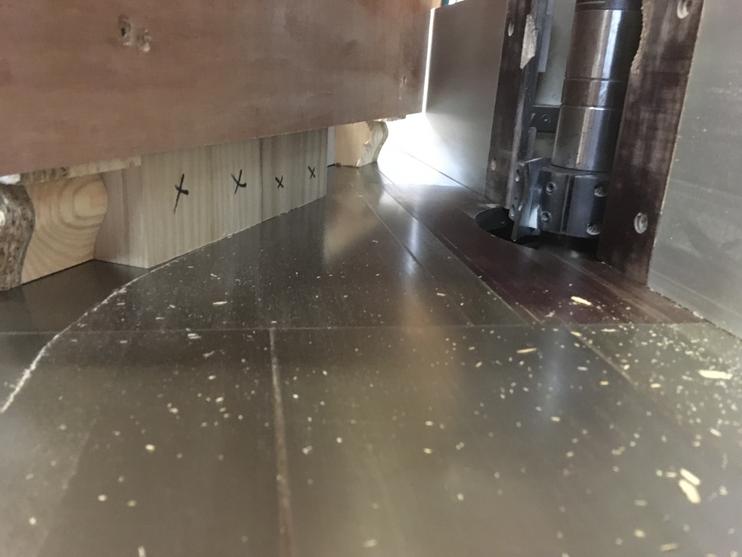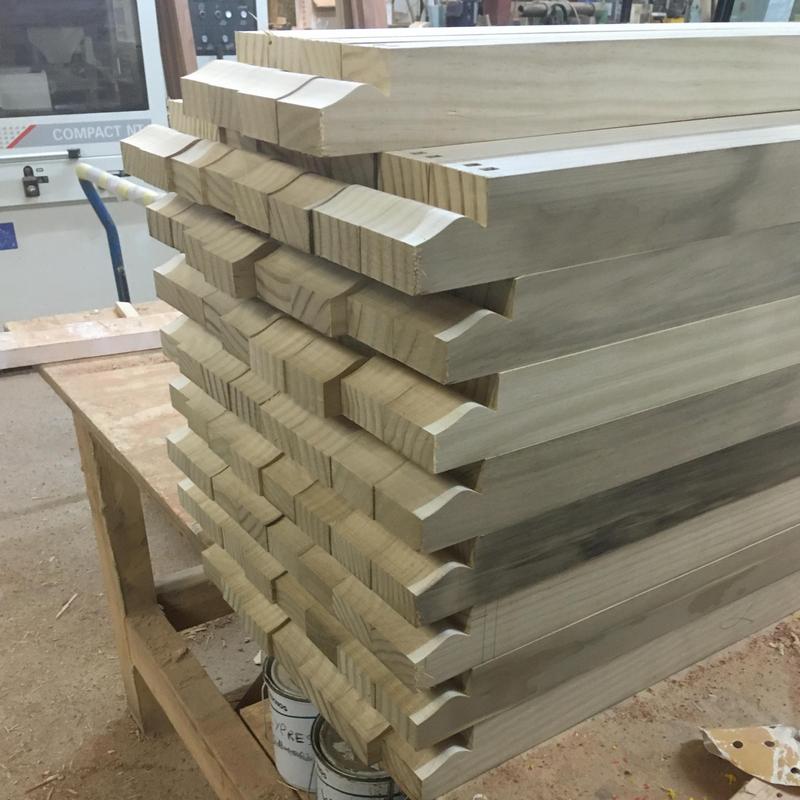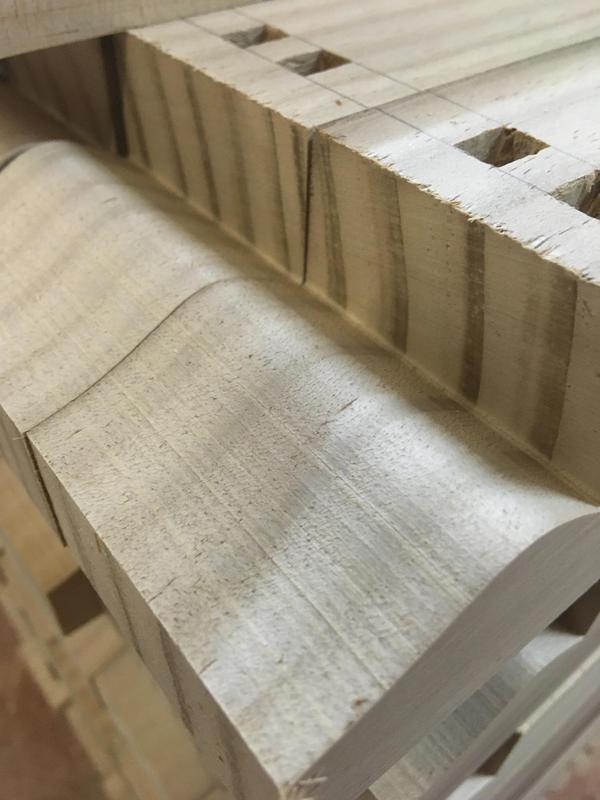Been working on some "Bodgers Delight" cutters today and I'd thought I'd share the process here

I've got a massive job coming up with many Boxed Sashes where there will be 60+ horns (or joggles if you're that way inclined) to cut. Now, usually these would be cut on the bandsaw close to the line and then sanded on the bobbin sander to match existing, but doing that many horns that way sounds very time-consuming. So I bought a pair of 50mm blank Euro knives from Wealden for about £10 and went at it.
It started with the really rough shape of the horn shape in question on a piece of hardwood, the full length of the horn is 60mm so a 50mm knife won't do it all in one pass and 60mm knives aren't available so I'll just have to make do. (Whitehill do 55mm blanks but they're twice the price of 50mm)
The block is then split with a 25 degree cut which will give you the template with the cutting angle included, so there's no guesswork or offering up to the workpiece constantly, just grind to the line.
25 degree piece laid sawn face down onto the cutter to give the correct profile and is then marked with a scribe onto black sharpie.
Most of the waste is cut away with an angle grinder.
Cutter is then ground at 90 degrees to the line with a 12mm wheel with a radius.
The second knife is then marked off the first knife to get them perfectly matching, you could use a couple of 6mm drill bits to align them but I just eyeballed it.
The bevel is then ground onto the knives just until the 90-degree portion disappears and the knife becomes sharp, the bevel I copied off an existing knife.
Cutters are fitted to a Euro Block (I will be using a heavier, larger steel one for the actual cutting for more support behind the knife) with blank limiters and a test cut is made with a scrap screwed to an end of a board.
Perfect match

. £10 of cutter knives and 1 hour of time which I kept an eye on, I probably would've spent more time drawing it up to send it to Whitehill (Of which I would then have to wait for correspondence and the knives in the post) than actually grinding it myself. As I said it isn't the exact length I would like but it's near enough that I can bandsaw the rest of it off a fence and sand it.
Just have to come up with a jig now to hold the sash stiles securely to go through the moulder... :-k In an ideal world I should own a Wadkin ECA tenoner with a head just for the job.





